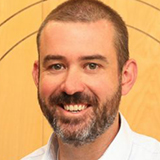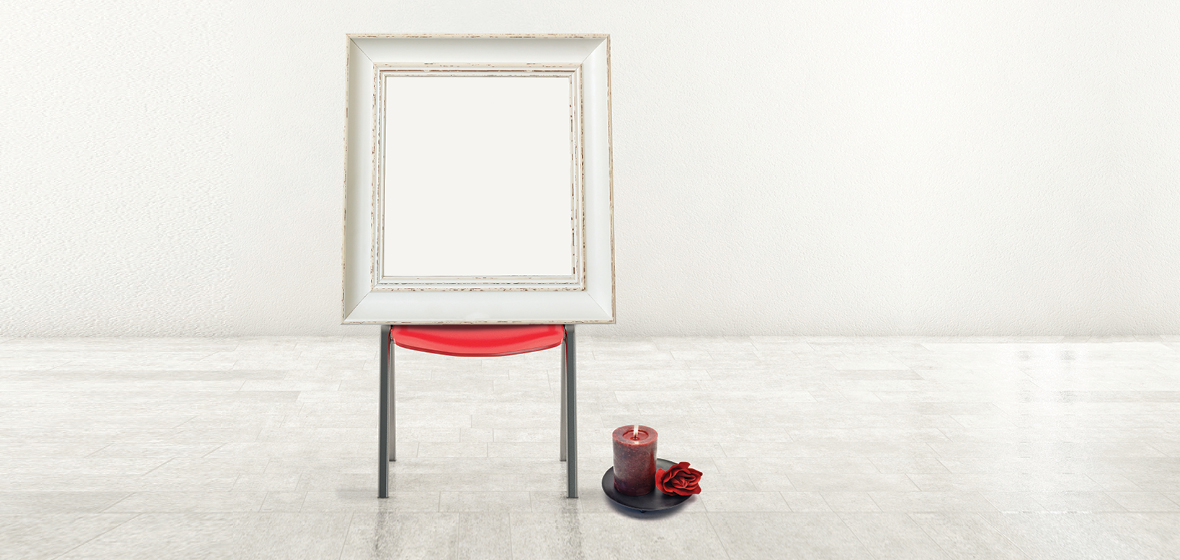Every case is so individual; you couldn’t say any one thing would tip the balance. Even if death can be proved, it’s a different thing to prove that a person caused it.
About 38,000 people are reported missing in Australia every year. Now a new British law is prompting advocates to say it’s time for change.
Daniel O’Keeffe disappeared in July 2011. The 24 year old from Victoria left behind a mother, father and three sisters. His whereabouts were unknown until his body was discovered five years later at his hometown near Geelong, southwest of Melbourne. He had taken his own life.
The tragedy prompted his sister, Loren, to start the Missing Persons Advocacy Network (MPAN). The organisation raises awareness for missing persons around Australia while supporting those who are left behind. O’Keeffe tells LSJ much can be done to improve the way the law treats missing persons.
“My brother’s disappearance sparked no concern from police despite our urgency, knowing that it was completely out of character for Dan to go missing,” she says. “They saw him as an adult male, capable of taking care of himself and suggested he would probably be back in a few days.”
The whole time he was missing, the O’Keeffe family battled everyone from banks to insurers and government bodies for permission to manage his affairs while he was missing.
“My parents had to call and write to every type of institution repeatedly,” she says. “They kept paying his health insurance, his memberships, his registrations. Many of the families I work with do this in case their loved one needs to access them. We [needed] to be able to suspend some things and transfer authority for others.”
In most Australian states and territories, applications for a presumption of death can only be made after a person has been missing for seven years. However, O’Keeffe notes applications of this type do not prove that a person has died even after the time has lapsed.
“We need to alleviate the enormous burden on those left behind.”
A case for fresh laws
A new law came into effect in the United Kingdom at the end of July called the Guardianship (Missing Persons) Act 2017. It creates a “new legal status of guardian of the affairs of a missing person” and allows someone to act in that person’s interests after they have been gone for 90 days.
This new law follows the disappearance of 35-year-old chef Claudia Lawrence at York, England, in 2009. Her father, Peter, is a former solicitor who campaigned tirelessly for change.
“Claudia’s Law will mean families can oversee the financial and property affairs of their missing loved one – removing a huge burden at such a traumatic time,” says Paul Maynard, a Member of Parliament for the Conservative Party who currently serves as Britain’s Justice Minister.
Australian Federal Police (AFP) statistics indicate that about 38,000 people are reported missing in Australia every year. Of these, about 64 per cent of reports are resolved within 24 hours. Eighty-six per cent are resolved within a week and 99 per cent are resolved within a year with the help of the community.
Missing persons are split almost equally between males (51 per cent) and females (49 per cent). The highest demographic is teens aged 13-17, who make up 49 per cent of cases.
This issue is a huge burden on families, police resources and local communities. In NSW alone, approximately 160 people are reported missing every single week. Aside from teens, the biggest groups of missing people are those with mental health issues and intellectual or physical disabilities.
O’Keeffe argues reform that gives families the ability to manage the administrative affairs of their loved ones is something Australia desperately needs. She says the stress it will save is “immeasurable”.
 Andrew Tiedt
Andrew Tiedt
Presumption of death
According to the Human Tissue Act 1983 (NSW), a person is legally dead when there is an irreversible cessation of either brain function or blood circulation in their body.
However, in cases where a person is missing and their death cannot be proven, it is possible for the Supreme Court to apply a presumption of death to allow for a missing person’s will to be executed and their estate administered. This can be done by either having a person swear to the death of a person or having the court make a declaration of death. Whether the court will make such a finding depends on the available evidence. In the case of MH370, for example, seven Australian citizens and residents went missing. In 2016, the wife of one of the passengers was able to satisfy the Supreme Court of Western Australia that her husband did board the doomed flight to Kuala Lumpur and that there was no hope of finding him alive.
It’s a significant step
“It’s a pretty big decision for a court to deprive someone of their rights to legal ownership of property or assets without any evidence that a person is deceased,” says Alexander Munro, an associate at Turner Freeman Lawyers in Newcastle who specialises in wills and estates.
“If someone has just gone away for a while, they should be able to come back without having everyone meddle in their affairs, but there’s certainly an argument that where there’s a strong presumption of death, [someone may] deal with their property interests until the court can make a finding.”
He notes, however, that there is a big difference between preserving someone’s assets to letting others obtain proprietary interest so they can deal with those assets as their own.
“Yes, allowing access to family assets and superannuation and insurance is important. Yes, seven years is a long time to wait, but you’d also hope that within that time there would be some developments as to a finding of death,” says Munro.
“Sometimes in law it’s better to approach these things slowly. It’s a significant step.”
What if there’s foul play?
A person’s legal status also changes when they are proven dead.
About 1 per cent of Australia’s missing persons are never found. Some disappear and are quietly forgotten. Others meet with foul play and their cases proceed to the courts.
William Tyrrell, the three year old who disappeared from his grandmother’s yard at Kendall in northern NSW in 2014, is one example. He has not been found despite the $1 million reward offered for information. His suspected abduction and death are now the subject of a coronial inquest.
Lynette Dawson, the mother-of-two who vanished without a trace in 1982, is another example. She was supposed to meet her mother at Northbridge Baths on Sydney’s north shore on Saturday 9 January but never arrived. The trial for her suspected murder is currently before the court.
Andrew Tiedt, Director of Criminal Law at Armstrong Legal in Sydney, has dealt with cases where a missing person has become an allegedly murdered person. Trials in these circumstances run as normal, but prosecutors have the additional responsibility of proving death.
Tiedt says they almost never turn on just one single piece of evidence.
“Every case is so individual; you couldn’t say any one thing would tip the balance,” he says. “Even if death can be proved, it’s a different thing to prove that a person caused it.”
“If a person has threatened to kill the missing person, that changes the landscape, obviously. If their burnt-out car is found, we might suspect foul play. If they miss key life moments, like a wedding, we might suspect their death.” Tiedt notes, these cases depend on various factors and consideration must be made to context.
“The burden of proof is high. In cases where death is not conceded, the prosecution will generally have a circumstantial case. For a person to be found guilty, it will need to get to the point where it’s just not reasonably possible that the person is alive. The prosecution will have negatived any other scenario.”

Key to finding people sooner
The best way to reduce the burden on families is obviously to find a missing person sooner.
Samantha Bricknell is the principal research analyst at the Australian Institute of Criminology. She wrote a research report on missing persons in 2017 that found “professional judgment” is the de-facto method to assess risk in missing persons cases and that evaluation of risk-assessment tools is lacking.
When it comes to identifying at-risk groups and allocating investigating resources, Bricknell tells LSJ that each state has a different approach. Further, inconsistent data quality makes it hard to measure the effectiveness of the way the system operates and investigations are conducted.
“There are certain groups considered highly vulnerable [to going missing] – children, young people, those with mental illness or intent to self-harm,” she says.
“Further refinement and understanding of sub-categories of vulnerability can help better pinpoint those that might not have been recognised as vulnerable in the past so better responses can be put into place.”
One sub-category of people who are particularly vulnerable to adverse outcomes when missing is middle-aged men, who statistically are among the most likely to commit suicide. Another vulnerable sub-category of missing persons is young women, who have a high chance of becoming victimised.
Bricknell claims much more nuanced research could be done in this field to determine why people disappear and how to combat the specific vulnerabilities these groups face when missing.
Experience meets science
Former police officer Karen Karakaya will never forget being able to tell a mother what happened to her 22-year-old daughter, who disappeared while hitch-hiking near Taree on the mid-north coast in the 1980s.
Karakaya served for 12 years in the NSW Police Missing Persons Unit, then later in the Coronial Investigation Team where she spent much of her time coordinating DNA testing and collection.
When some remains were found and the details were published on the news, a family member reached out and said they suspected they belonged to the missing woman. Karakaya’s team responded to the woman’s mother and organised a DNA sample to be tested. It was a match.
“She had closure,” she says. “She had wondered all those years what she’d done for her daughter not to want to speak to her, it was such an emotional time. You built up such good rapport with these families, you’re the only conduit between them and their missing person. That one really stands out.”
Karakaya says better classification of missing persons cases could help improve the way police resources are allocated and investigations are conducted. However, she is quick to add the caveat that allocating such classifications requires reliable evidence and investigatory expertise.
“It would have to be done by someone with policing experience who understood the nuances. It’s just little things. I remember a case where a man reported his wife missing. They went out for dinner and had an argument and she went for a drive,” she says.
“He gave a detailed description of her clothing, what was in her handbag. I just thought, ‘Really? What husband pays that much attention to what’s in the handbag?’ At the end of the day, our hunches paid off and he was charged with her murder. You need to be aware of little things, when things don’t sit right.”
 Michael McTiernan
Michael McTiernan
How can we get the word out quickly? The longer it gets, the harder it gets. It’s important to activate the community, to raise awareness and put those images [of missing persons] out as soon as possible.
Technology bringing change
Technology is also expected to bring big changes, both in solving cold cases faster and finding missing persons sooner. While advocates call for legal changes and academics call for more research, LSJ understands there are calls from the scientific community for a dedicated missing persons laboratory.
There are currently about 2,600 long-term missing persons cases in Australia and experts estimate there are some 500 unidentified human remains archived around the country. If their DNA could be matched to the national database, it could lay a huge number of cases to rest.
The only trouble is that active crimes will always take priority over cold cases, and Australia currently has no dedicated missing persons infrastructure. A prominent forensic DNA specialist, who asked not to be named, told LSJ the lack of this key resource means Australia is falling behind other countries.
Technological advances are also creating a national network of eyes and ears. For example, ride-share service Uber recently announced an initiative educating its 82,000 drivers and delivery partners about missing persons in the hope that a combined effort will help reunite more people with their families.
Michael McTiernan, a former AFP investigator who now heads Uber’s law enforcement operations in Asia-Pacific, tells LSJ the community plays a key part in missing persons investigations.
“How can we get the word out quickly? The longer it gets, the harder it gets. It’s important to activate the community, to raise awareness and put those images [of missing persons] out as soon as possible,” he says.
It’s expected that improvements to facial recognition technology, financial tracking and artificial intelligence will also significantly assist missing persons investigations into the future.




